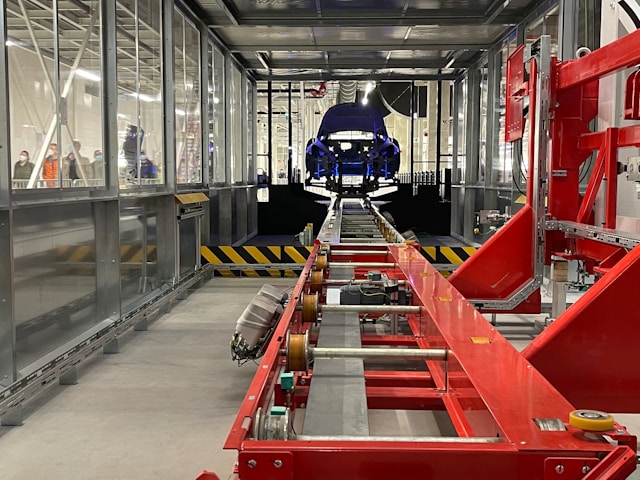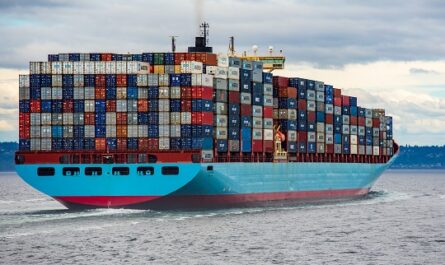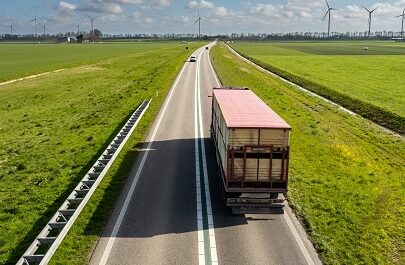In recent years, more and more organizations are focusing on achieving zero waste in their supply chains to become more efficient and sustainable.
Although getting rid of all waste might sound challenging, it’s not impossible. Let’s take a closer look at whether achieving zero waste in the supply chain is actually doable.
Before we go further into this topic, don’t forget to follow my LinkedIn account. You’ll get more helpful insights on supply chain management there.
Table of Contents
Is Achieving 100% Waste Elimination Possible?
The quest for zero waste in supply chains brings up a big question: Can we really eliminate all waste? This question leads to a closer look at how we manage waste and sustainability in supply chain operations.
While achieving absolute zero waste might seem overwhelming, it’s not impossible. Instead, it acts as a guiding principle pushing organizations towards more efficient and sustainable practices.
Achieving zero waste in the supply chain requires a united effort and a varied approach. But it’s important to remember that even though it’s a big challenge, we can make significant progress by using different strategies.
From mapping out supply chains to making processes more efficient, designing sustainable products to embracing new technologies, there are many ways to cut down on waste at different stages of the supply chain. By adopting these strategies and working together, organizations can get closer to the goal of zero waste.
In the end, while completely eliminating waste might be a lofty goal, the journey towards zero waste comes with real benefits. Beyond helping the environment, reducing waste in supply chains improves efficiency, cuts costs, and gives companies a competitive edge.
As organizations keep finding new ways to reduce waste, they’re also shaping a more sustainable future where zero waste isn’t just a dream but a driving force for positive change.
You might also like:
- Managing Fluctuating Demand: Strategies for Optimizing Production Capacity
- When to Increase Production Capacity: Best Timing and Methods
Incremental Progress: A Practical Approach
Experts widely recommend a phased approach to cutting waste in supply chains as a smart and effective strategy. This method involves dealing with waste issues step by step, allowing organizations to focus on the areas where waste has the biggest impact on their operations and profits.
By breaking the process into smaller stages, companies can tackle the root causes of waste systematically and put in place targeted solutions. This approach not only makes waste reduction simpler but also helps organizations use their resources wisely, making sure they invest in projects that give them the best results.

Making small improvements over time is key to the success of phased waste reduction strategies. By gradually improving their processes and systems, organizations can reduce the risk of disruption while steadily working towards their waste reduction goals.
This continuous improvement approach creates a culture where even tiny changes add up over time to make a big difference. It also lets companies adjust their strategies based on feedback and changes in their business needs, ensuring their waste reduction efforts stay on track with their overall goals.
In addition to avoiding disruption and using resources better, a phased approach to waste reduction helps build long-term sustainability and strength in supply chains. By dealing with waste at different stages of the supply chain, organizations can create strong, efficient systems that can handle challenges from outside.
And by using data to guide their waste reduction efforts, companies can spot new trends and opportunities to innovate, putting them at the forefront of sustainability and driving positive change in their industries.
Essential Components for Achieving Zero Waste
Achieving zero waste in the supply chain requires a teamwork approach involving many people both inside and outside the organization. It starts with the commitment of leaders, who set clear goals and create a culture that values reducing waste and being sustainable. This commitment lays the groundwork for various projects and ideas, making sure everyone is working together towards the same goals.
Mapping out the supply chain and analyzing data are crucial for finding where waste is coming from and where things could be more efficient. By carefully tracking how materials move and analyzing data, organizations can see where waste happens and find ways to improve.
Using techniques like waste audits and tracking performance metrics helps organizations measure their waste and see how they’re doing, so they can make smart choices to use resources better and make less waste.

To reach zero waste, organizations also need to focus on making products and processes more sustainable from the start. This means designing products with less packaging, using materials that can be recycled, and finding ways to make manufacturing more efficient.
Working closely with suppliers is important too, to make sure everyone is on the same page about being sustainable.
Embracing new technology, training employees on how to reduce waste, setting up systems to manage the environment, and always looking for ways to improve are all important pieces of the puzzle.
By working together on all these fronts, organizations can make big strides towards creating less waste, being more efficient, and being kinder to the planet throughout the supply chain.
You might also like:
- 10 Strategies to Overcome Data Processing Challenges for Supply Chain Teams Lacking Expertise
- 10 Ways Supply Chain Management Can Contribute to Business Profits
Realistic Expectations: Striving for Minimal Waste
While aiming for zero waste sounds great, in reality, it’s often more about aiming for as little waste as possible rather than getting rid of it all completely. Organizations understand that getting rid of all waste everywhere might not be possible because of different problems and limits.
Instead, they work on ways to make less waste and use resources better all through their supply chains. By taking this practical approach, organizations can still make big cuts in waste while recognizing the challenges of aiming for zero waste.
To reduce waste, organizations use lots of different strategies, like recycling and finding better ways to use resources. They invest in new technologies and systems to help them find where waste comes from and figure out how to stop it.
By always trying to do better and coming up with new ideas, companies can slowly shrink their impact on the environment and get closer to making as little waste as possible.

On top of helping the environment, focusing on making less waste fits with bigger goals for sustainability. By putting less waste out there and using resources smarter, organizations help protect the environment, use up fewer resources, and stop waste from hurting ecosystems and communities.
Even though getting to zero waste might be hard, working towards making as little waste as possible builds a culture of caring, finding new ways to do things, and always trying to get better. This helps make a real difference for the planet and pushes forward goals for sustainability in businesses and industries.
Conclusion
In summary, even though aiming for zero waste in the supply chain is a big goal, it’s still worth going after.
By working together and using smart plans, organizations can make big progress in cutting waste, making operations more efficient, and being kinder to the planet.
By teaming up with others, trying new ideas, and caring about the environment, companies don’t just help themselves—they also help make the world better for the future.
I hope you find it helpful!
Please share this article with your colleagues so they can also benefit. For more insights on supply chain management, follow my LinkedIn account. You’re free to use all articles on this blog for any purpose, even for commercial use, without needing to give credit.

 by
by 

